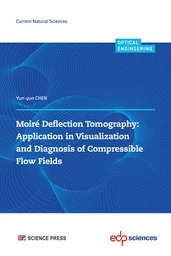Abréviations.................................................................. .................................................. ...............7
Chapitre 1 Synthèses ................................................................ .................................................. ....11
1.1Les points-clés à retenir.................................................. .......................................11
1.2 Synthèses non catalysées par des métaux ....................................................... 13
1.3 Synthèses catalysées par des métaux ........................................................................24
Chapitre 2 Réactivité des hétérocycles à six chaînons...................................................... 35
2.1Points-clés à retenir ........................................................................................35
2.2 Réactions typiques......................................................................................36
2.3 Applications aux hétérocycles d'intérêt – Synthèses multi-étapes......................... 53
Chapitre 3 Réactivité des hétérocycles à cinq chaînons......................................... ...... 57
3.1Points-clés à retenir..............................................................................................57
3.2 Réactions typiques............................................................................................58
3.3 Applications aux hétérocycles d'intérêt – Synthèses multi-étapes............................ 68
Chapitre 4 Réactivité des polyhétérocycles contenant à la fois des cycles à cinq [1] et à six chaînons.................................73
4.1Points-clés à retenir.................................................................................73
4.2 Réactions...................................................................74
Chapitre 5 Réponses ..................................................................................99
5.1Synthèses........................................................................................................99
5.2 Réactivité des cycles à six chaînons................................................................ 132
5.2.1Points importants à garder à l'esprit .............................................................. 132
5.2.2 Réactions typiques..............................................................................133
5.2.3 Applications aux hétérocycles d'intérêt – Synthèses multi-étapes.............. 161
5.3 Réactivité des anneaux à cinq membres .......................................................167
5.3.1 Réactions typiques ................................................................................167
5.3.2 Applications aux hétérocycles d'intérêt – Synthèses multi-étapes ......................183
5.4 Réactivité des polyhétérocycles contenant à la fois des cycles à cinq et à six chaînons .188
Liste des livres et critiques .................................................. .............................................223
Annexe Notions de base de nomenclature ou comment trouver la bague structure de son nom .................................227













